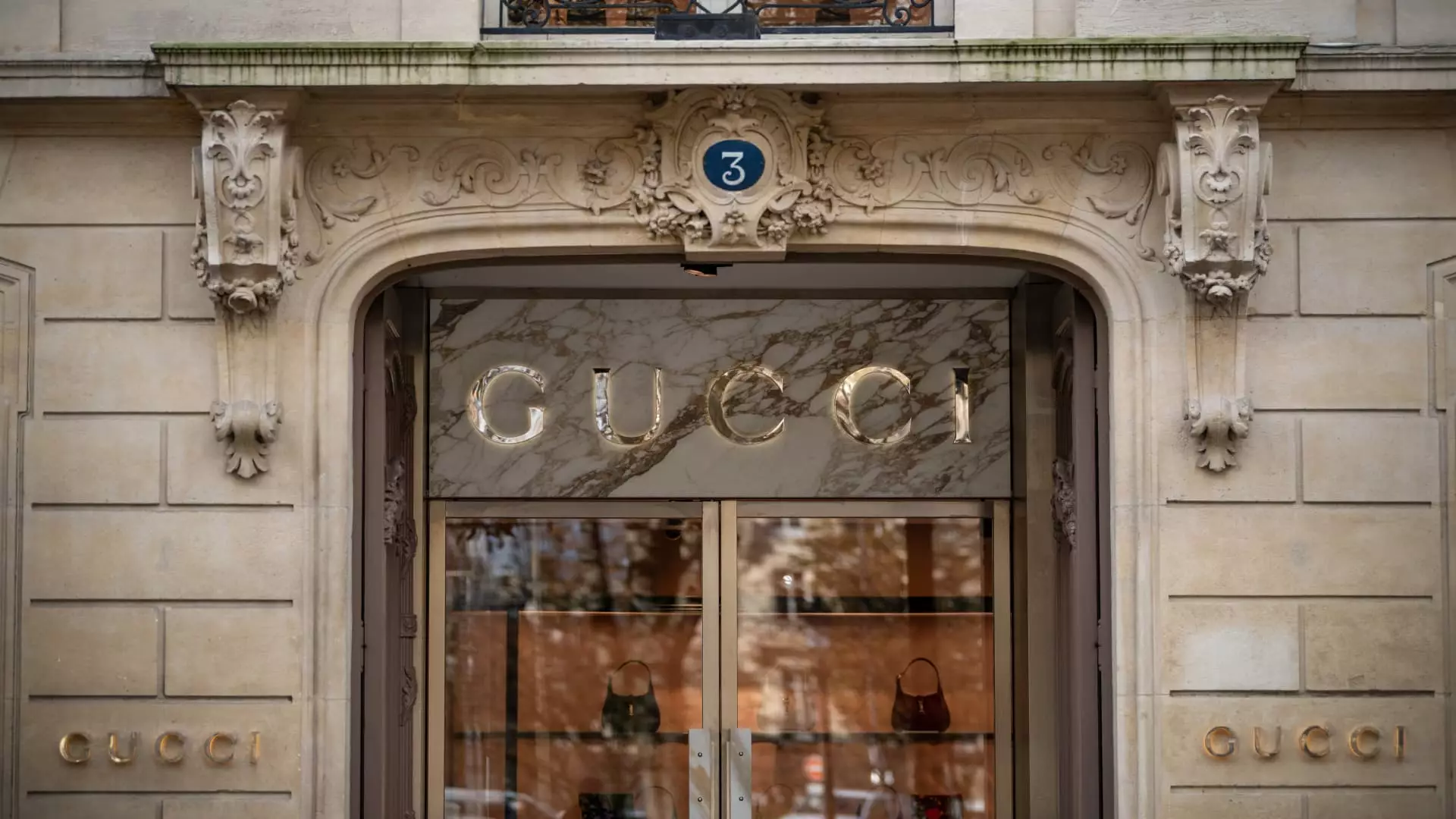The world of luxury fashion has always been portrayed as a glimmering oasis of unyielding growth and exclusivity. Yet, with Kering’s recent report revealing a staggering 14% drop in first-quarter sales, the facade is starting to crumble. Once a titan, Kering has found itself navigating rough waters, and the heavy 4.3% decline in its stock signals that investors are keenly aware that this is no mere blip on the radar. What happens when a corporate goliath like Kering begins to exhibit signs of distress? The implications reverberate not just through the company but across the entire luxury sector, and the ripples could engender a change in how consumers view luxury brands in a more budget-conscious world.
Gucci’s Missteps and a Fading Appeal
Kering’s flagship brand, Gucci, which constituted nearly half of the group’s revenue, has become the focal point of decline, with sales plummeting 25%. It’s hard to ignore the irony here: a brand that once epitomized cultural relevance and desirability is now fighting to reclaim its former glory. The appointment of Demna Gvasalia as Gucci’s creative director—a strategic move aimed at rejuvenation—has only served to remind us of the perilous balance between creative innovation and market relevance. Gvasalia’s previous controversial ad campaigns have left investors wary, and rightly so.
The notion that a brand could once again resonate with consumers feels perilously outdated; Gucci has become a reflection of its own uncertainty. The luxury label’s designs have reportedly lost favor with a customer base whose loyalty can be as fleeting as the latest fashion trend. Compounding this problem is the enormous risk posed by over-dependence on the Chinese market, which is increasingly showing signs of fatigue. Gucci’s struggles epitomize a larger issue: even the mightiest brands are susceptible to shifts in consumer sentiment, making them vulnerable in an ever-evolving landscape.
A Crumbling Global Prestige
Beyond the brand’s internal troubles, Kering has been rocked by broader economic challenges. A 25% sales drop in Asia and notable declines in both North America and Europe reveal a trend that goes beyond company-specific issues. As luxury markets buckle under high inflation and economic uncertainties, the prediction of a renaissance for brands like Kering looks increasingly grim. While seasonal fluctuations are expected, sustained downward pressure from macroeconomic factors poses a serious threat.
The luxury segment had been anticipating an easing after some signs of positive recovery in late 2022, but as analysts warn, these fleeting moments of hope are no substitute for a solid strategy. The once-coveted status of luxury brands might be increasingly perceived as an extravagant choice rather than a staple.
Vigilance and Reassurance: Words Over Action
François-Henri Pinault, Kering’s Chairman and CEO, has attempted to reassure shareholders and stakeholders, attributing the company’s woes to “macroeconomic headwinds.” However, words alone are light-years away from carving a path to recovery. Watching him mention “action plans” while the company sinks deeper into troubling sales metrics calls into question the efficacy of these so-called plans. The luxury community has seen better days, and the perceived lack of effective response might leave consumers and investors cynical.
What’s worse is that the current economic instability could “postpone a recovery in luxury demand,” according to Adam Cochrane of Deutsche Bank. It calls to mind the critical question: can Kering adapt and innovate when thoroughly entrenched in a cycle of perceived failure? The unease surrounding its pricing strategy also looms large, suggesting that Kering may not be in a position to raise prices as this would be tantamount to committing financial suicide when customer sentiment is eroding.
Implications for the Luxury Market
Kering’s woes serve as a warning sign for the entire industry: luxury branding may no longer guarantee immunity from financial downturns. The perception of luxury is shifting as consumers become more discerning, swayed not just by exclusivity, but by social consciousness and relatability. With the established leaders of the market now grappling with uncertain futures, it begs the question—will a younger, more agile cohort of luxury brands emerge, making Kering and its contemporaries obsolete?
In an era defined by skepticism towards large corporations, Kering’s struggle is indicative of broader inconsistencies within the luxury landscape. As brands like Gucci fail to meet modern expectations and economic headwinds mount, the need for innovation and adaptation becomes non-negotiable. To thrive in such a volatile environment, Kering must not only weather the storm but redefine its approach to brand relevance, or risk fading into obscurity in a world that demands more than just prestige.

